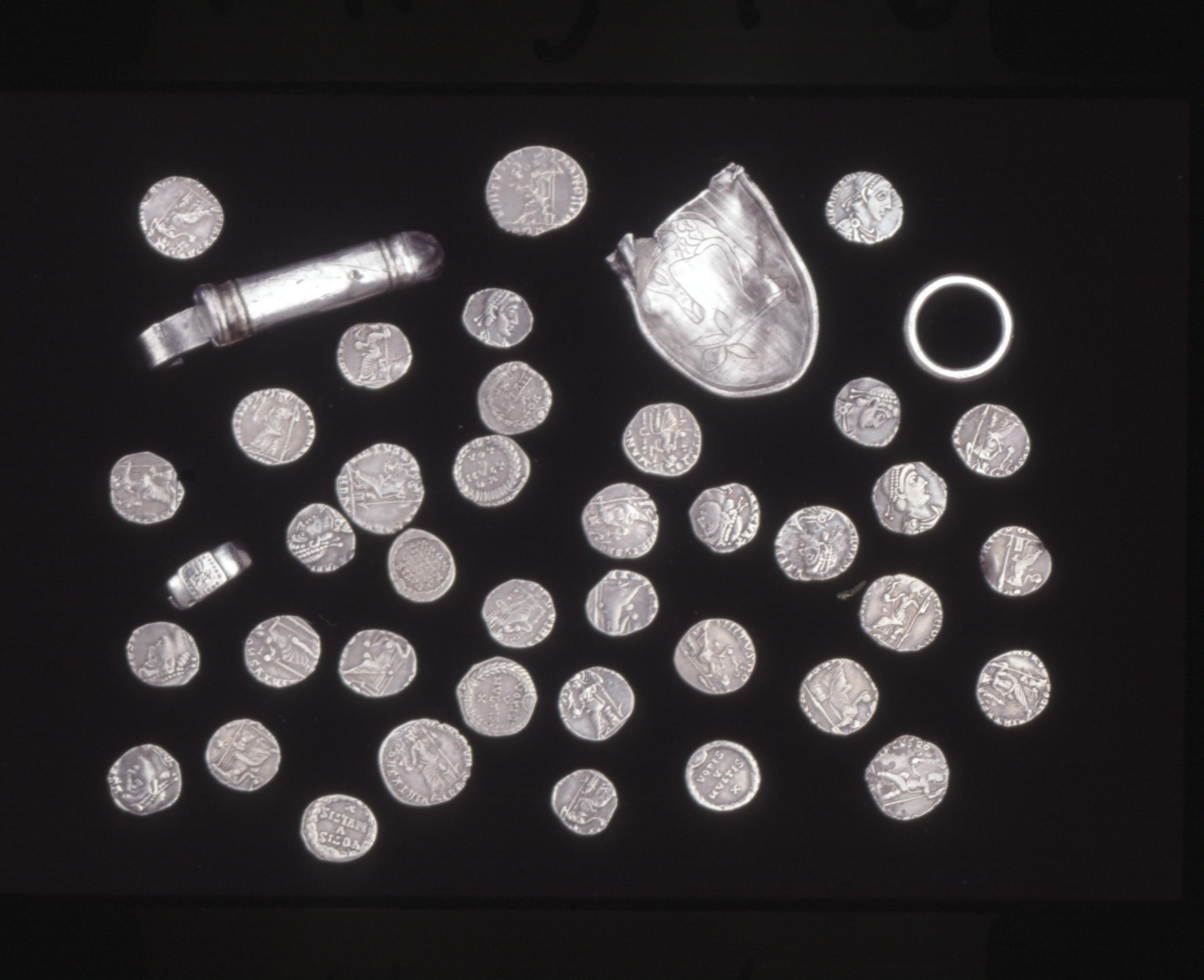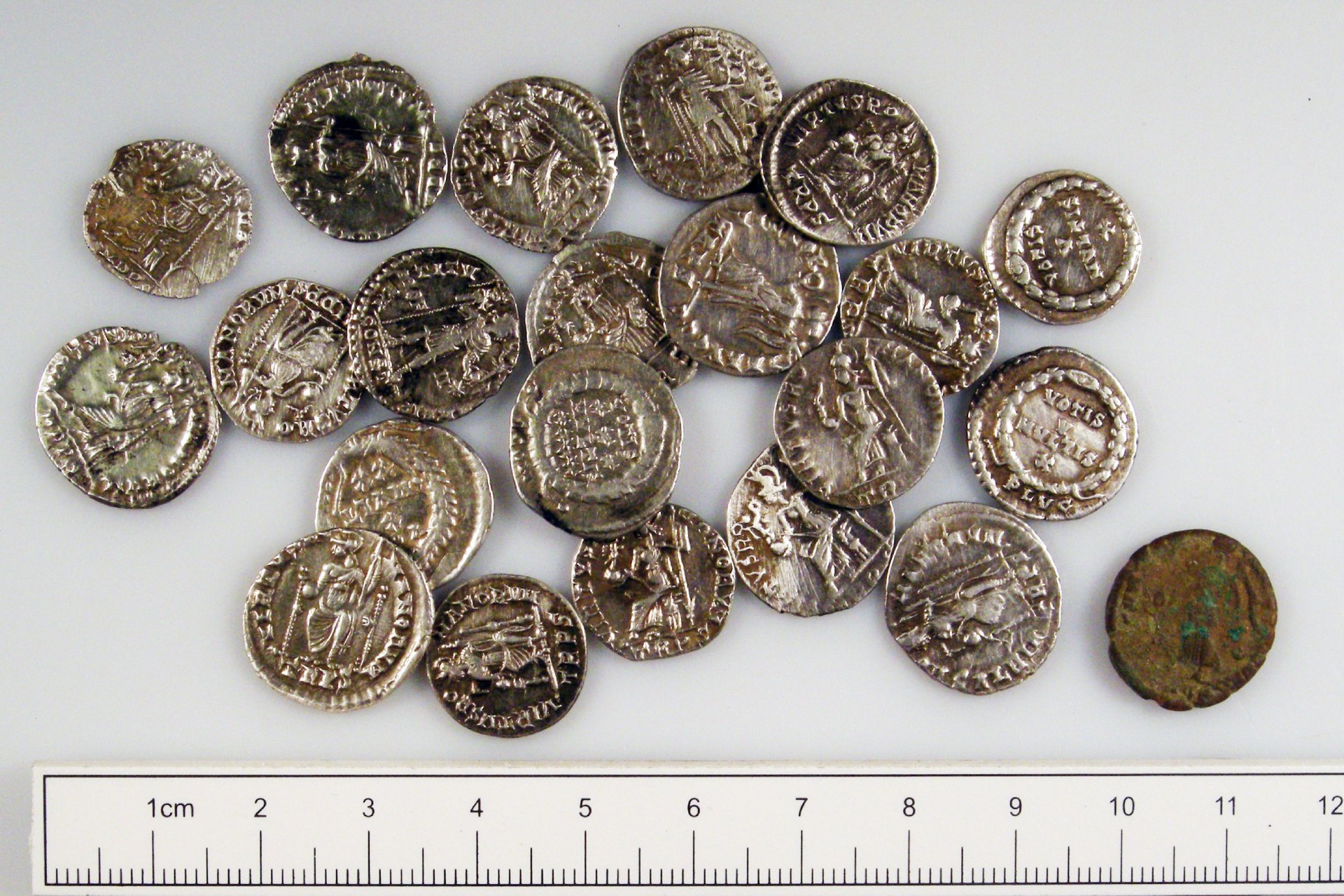As we discussed in one of our previous blog posts (see here), we are carrying out pXRF analysis on around 30 silver objects as part of our study. Undertaking this type of non-destructive scientific analysis allows us to examine the metal composition of the chosen objects and these results will contribute to our assessment of the metal economy and circulation of silver in late and post-Roman Britain.
We have chosen different artefact types to undergo pXRF including spoons, finger-rings, necklace clasps and penannular brooches, but have chosen not to study the composition of the silver coins. This is because previous research, for example, a detailed study of the coins found in the Hoxne hoard, has already documented that late Roman siliquae were made with high-quality silver, with a silver content exceeding 90% (Guest, 2005). These coins also include the letters ‘PS’, shorthand for the word pulsatum, at the end of the mint mark (e.g. TRPS/MDPS) which indicated that the high purity of the coins were guaranteed.

To ensure a good level of accuracy, we used a silver disc of known composition (called a calibration standard) to calibrate Kent’s pXRF machine. We also compared some of our results with analysis of the same objects carried out at the Department of Scientific Research at the British Museum. It is encouraging that there was very little difference in the results as this suggests our machine’s readings are reliable.
The preliminary results from the p-XRF study have shown that barring a few exceptions, most of the silver objects were also manufactured from high-quality silver averaging above 90%. This result is not so surprising since we know that silver was highly regulated in late Roman society but p-XRF results are still important, as for the latest-dating objects, they demonstrate a continued effort to maintain late Roman standards even after the regular supply of silver to Britain had ended.
References:
P. Guest, The Late Roman Gold and Silver Coins from the Hoxne Treasure (British Museum Press:London, 2005)
